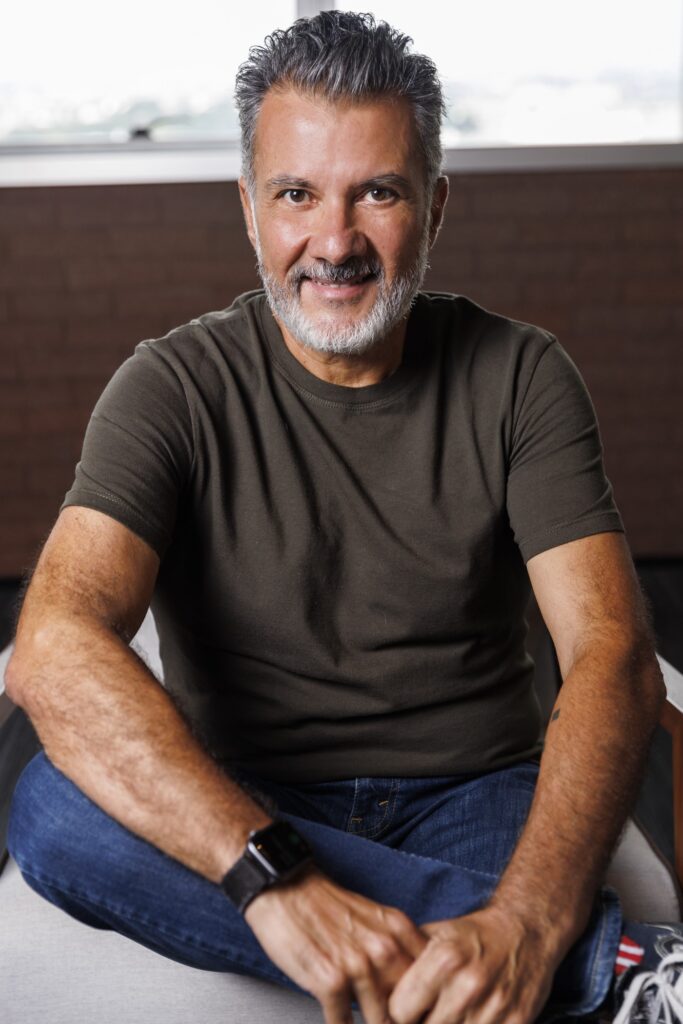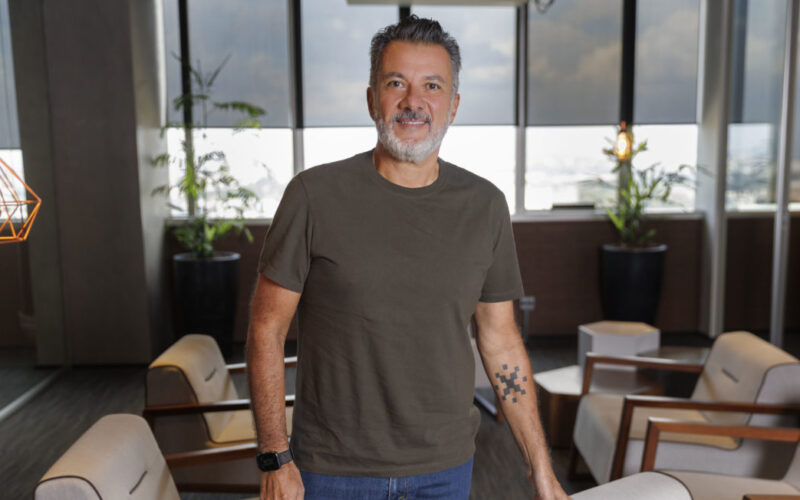Antonio Soares is CEO of Dock. Dock is a Brazilian platform that offers solutions for the entire payments and banking ecosystem. In May 2022, Dock raised a $110M funding round, which brought its valuation to over $1.5B. The round was led by U.K.-based Lightrock and Silver Lake Waterman.
In 2014, Riverwood Capital and Antonio Soares acquired Conductor. In 2021, three brands – Conductor, Dock, and Muxi – were united into one under the Dock brand.
In an exclusive interview with Latamlist, Antonio shared his insights on financial inclusion, embedded finance, Pix, and more.
Carolina González: Hi Antonio, thanks for joining us today. Could you start by sharing with us a brief introduction about who you are?
I’m Antonio Soares, partner, CEO, and kind of founder of Dock. I used to work for traditional companies here in Brazil, and after 40 years, I decided to start a company. It was in a different way from traditional founders because, together with Riverwood, we acquired Conductor.
If you look at the Brazilian market, we [Dock] probably are one of the most relevant players for financial inclusion. And one of the things that we like to talk about: this is not philanthropy, this is a real business. This is why I wake up every day and what I think about: what can I do today to put more people in the financial system? Working on financial inclusion for me is so important. It’s almost as important as health and other public services, but it’s not a public service.
Alejandra Cruz: So, how is it that fintechs can catalyze financial inclusion?
If you look at what is happening right now, the consumer is very unique. It’s different from the 80s, 90s, and 2000s. Every consumer needs specific products. And fintechs will deliver these specific needs for each niche. If you’re talking about 8 billion people in the world, and about 25% of these people are Z generation, they are all different.
With consumer goods, with services, we talk a lot about experience, not anymore about products. I’m not against banks, but they’re focused on creating products. They are not focused on solving client needs. Fintechs are in the middle. Banks are very important in this ecosystem, and also for the fintechs, and I do believe that fintechs and banks should be working together. Fintechs know the client and know how to solve the business problem for the client. And the banks are not so good at it. So this is the way that fintechs will change the world.
Alejandra: How can fintechs overturn Latin Americans’ distrust of financial institutions?
I think that the next phase of fintech is embedded finance. As a customer, I have a lot of relationships with traditional companies that I trust, my supermarket, for example. And when you’re talking about embedded finance, these traditional companies can deliver banking services through known banking institutions. There is this famous quote from Bill Gates that goes, “Banking is necessary. Banks are not.” Banking activity is needed. It’s how you deliver a banking service or product that will change.
I think embedded finance will be the next phase of financial inclusion. Why? If I’m a retailer and I want to deliver a financial service to my client, my main objective is not to make a lot of money in financial services. It’s delivering a good payment experience.
Banks don’t have this view about the client because they are not in the field, like a retailer. That’s it. That’s the main point. Retailers talk to their customers every week. So they know their needs. Embedded finance will really change really the world, and not only the B2C world but also the B2B world.
One of the things that we are talking about here at Dock as a behavior to adopt in 2023 is: if you’ve been doing something for ten years, review it because there is an opportunity to increase the quality and efficiency, and to deliver a better experience.
Alejandra: I just wanted to mention a quote from Angela Strange, General Partner of Andreessen Horowitz, who said that every company will be a fintech company, right? Otherwise, they will not be able to compete or cater to real consumer needs. And in relation to this, how can embedded finance help customers trust in financial services?
The main point here is that the bank industry has a more cold relationship with customers. It’s a very formal relationship. When you go to embedded finance, banking is not the core business of the company. It’s an add-on. This does not mean that the financial service will be bad quality, but this means that the company will not push you to get insurance, for example.
I think the trust will increase because it’s not their core business. Many people trust Uber payments, but you don’t see it, it’s invisible. And Uber is getting your card number. Payments are not the core business of Uber, it’s a need of Uber. So, it’s easier when someone trusts in their retailer and their consumer goods company or their product company or their service company.
Carolina: What is your point of view on Brazil’s government’s decision to open-source Pix? Can the effect it had on Brazil’s financial inclusion be replicated in other Latin American countries?
First, Brazil’s Central Bank knows how to push the buttons to increase competitiveness and increase new ideas. And that’s why Brazil is one of the biggest countries in fintechs, because of its Central Bank. They understood that there is a need, and they created the right environment for fintechs.

And what happens with Pix? By the end of the day, it is a customer need. I want to pay in a very fast and easy way without having a credit or debit card. I just get my app, I open my digital account, and I’m ready to go. Instant payments are solving a real problem for the customer.
And does this apply to other countries? Definitely, because the customer need is the same. Instant payments start with peer-to-peer. But now, you can include small businesses to get paid through digital payments.
In Brazil, we have high financial inclusion rates compared to Latin America as a whole because we have all this fintech movement. So, why is Pix working so well in Brazil? The Central Bank first created the audience for Pix. They created the fintech environment and opened the market to enable many people to get their digital accounts. So, once everybody has their digital account, they use Pix as a feature of the digital account. Mexico has instant payments, but it’s not the same use we have in Brazil. Why? Because Mexico did not yet achieve higher rates of financial inclusion.
Carolina: What do you believe it will take for Latin American governments to catch up with the rise of fintechs, collaborate with them, and work on regulations?
Payments is the most regulated industry in the world. And the regulation is different in each country. Nobody is better than the local regulator in understanding the country’s needs. Sometimes we don’t agree with something, but we probably have to trust them because they are looking for something important for the country as a whole. Regulators have the responsibility to preserve the system because it’s very easy to make kind of a mess if you’re not regulated.
The speed of the fintech ecosystem will depend on the regulation. And in Latin America, the collaboration between both is increasing.
Alejandra: What we’ve also seen is that sometimes regulation doesn’t go as fast as fintechs. For example, in Mexico, regulation is taking a step-by-step approach. How can fintechs unite with governments to improve regulations so financial services can be further democratized?
I believe this step-by-step approach is the best because it’s exactly like an MVP concept. Let’s try this, let’s analyze, then let’s just stop a little bit more, make a change, and try again. This is happening in Mexico, and it’s also what happened in Brazil.
And, of course, the speed of this step-by-step will depend not only on the regulator but on the whole system. Probably in the next year, the appetite for regulations and investments will decrease. So probably this speed will decrease also.
Alejandra: What do you think regarding the increasing competition between fintech players? There are fintechs for almost everything right now. Is this the right approach, or will there be, at some point, too many fintechs on the market?
There are specific needs for each final customer. If you have the infrastructure, you can have a fintech with 10,000 clients only or 5,000 clients. This is something that in the past was not possible, because you needed to have a lot of money to invest in technology, to buy systems, to have IT, to have a license and etcetera. Many small companies will be working in niches, and they’ll be viable. And this is very in line with the new generation.
It’s like we are going back to the past, living in small communities but with a lot of technology. I can deliver financial products and services far away from cities, and I will deliver them with the same quality and the same technology.
—-
Antonio also shared with Latamlist his insights on what the fintech landscape will look like in 2023. Listen to the interview on the latest episode of the Espresso podcast.



